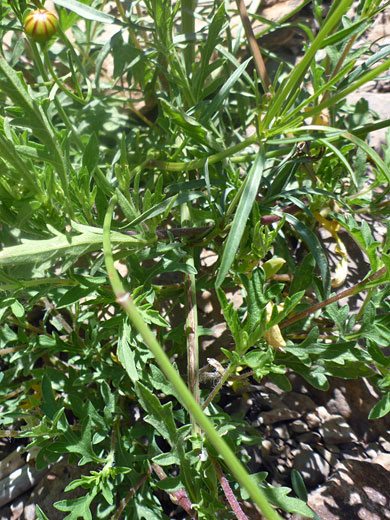Common name:
Golden tickseed
Family:
Scientific name:
Coreopsis tinctoria
Main flower color:
Range:
Native to the Great Plains and the northwest; adventive in scattered areas of most other western states
Height:
Usually up to 30 inches; sometimes up to twice this
Habitat:
Fields, verges, grassland, disturbed ground, often on clayish or sandy soils, from near sea level to 7,000 feet
Leaves:
Pinnately divided once or twice; lower stem leaf lobes are narrowly lanceolate to oblanceolate, while upper leaves have linear or thread-like lobes
Season:
May to September
Coreopsis tinctoria is most common in Texas and the Deep South, but has a sizeable population in central Arizona, and is found in small areas of most other states. Plants are often used for landscaping or in gardens, so have become established in many regions where they are not native.
All plant parts are hairless. The smooth stems bear leaves around the base and at widely-spaced (opposite) intervals along the stem. Leaves are divided into slender lobes, becoming thinner for leaves higher up the stem. Phyllaries are relatively broad, often reddish at the edges, while at the base of the involucre are a few much smaller bractlets, triangular in outline. Disc florets are reddish-brown, while the ray florets are red at the base and yellow higher up, varying in proportion from mostly red to mostly yellow.
All plant parts are hairless. The smooth stems bear leaves around the base and at widely-spaced (opposite) intervals along the stem. Leaves are divided into slender lobes, becoming thinner for leaves higher up the stem. Phyllaries are relatively broad, often reddish at the edges, while at the base of the involucre are a few much smaller bractlets, triangular in outline. Disc florets are reddish-brown, while the ray florets are red at the base and yellow higher up, varying in proportion from mostly red to mostly yellow.
All Contents © Copyright The American Southwest | Comments and Questions | Contribute | Site Map



